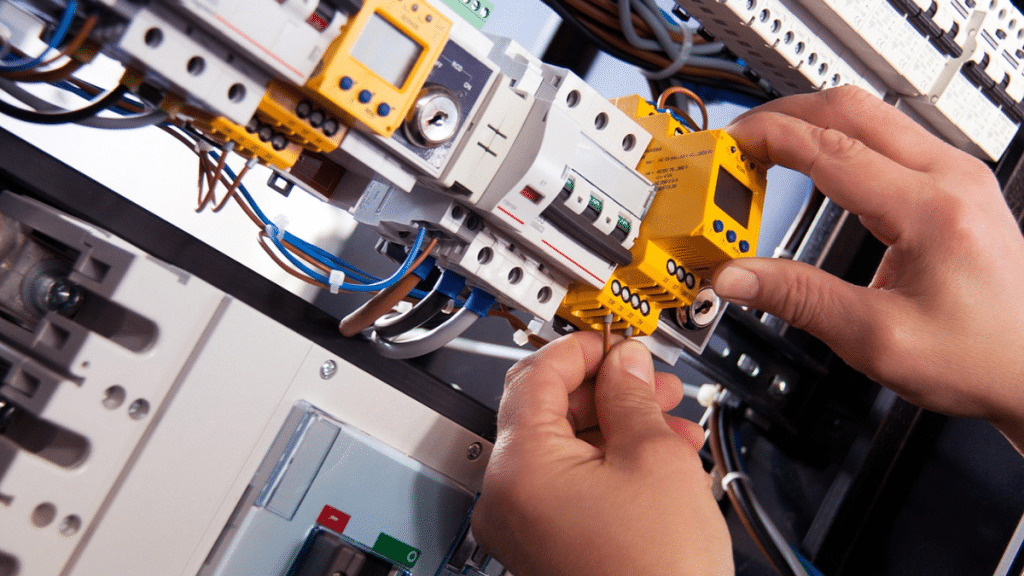The last few years have seen a dramatic increase in all aspects of the general cost of living. Australia hasn’t been exempt from this and many locals have resorted to looking for more economical ways to reduce costs without jeopardizing a reasonably comfortable life style.
In addition to investing in renewable energy, many locals are also looking for ways to save on their utility bills. One of the more effective ways of doing this is to enlist the electrician Canberra residents rely on to assist with energy-cutting measures.
Why Should You Make Your Home More Energy Efficient?
Making your home more energy-efficient has benefits to your budget and the local environment. The current global interest has shifted to reducing individual carbon footprints, which means people are now opting for ways that see them using less energy from the main power grid.
Some of the more prominent benefits you can expect from increased energy efficiency include the following:
- Lower utility bills
- Reduced waste (using fewer resources)
- Cleaner air
- Improved indoor comfort as a result of quality insulation
- Less noise due to quieter energy-efficient appliances
Look Forward to Less Energy Consumption
Experts believe that no matter what energy-saving measure you’ve already put in place, there’s always more you can do. With that in mind, our team of experts has listed a few clever tips that you can implement to make your home more energy efficient and also show additional savings on your overall energy bill.
1. Arrange an Electrical Inspection
Before you start implementing any energy related changes in your home, it’s a good idea to schedule an electrical inspection. An accredited electrician will then inspect your switchboard, wiring, and all related electrical components. The aim here is to identify old, energy-guzzling components that could easily be replaced with more efficient ones.
Many old homes in Australia still have the following old components:
- Dated iron core lighting transformers that waste a huge amount of energy
- Clogged exhaust fans that are often filled with grime and dirt, slowing down efficiency
- Older appliances that use excessive energy to work
- Incandescent light fittings that draw more energy than needed
- Overworked old electrical switchboards struggling to meet modern requirements
- Outdated wiring that can pose a fire hazard when outlets are overloaded
2. Upgrading Dated Switchboards
Outdated electrical switchboards found in older homes aren’t suited to modern electricity requirements. This means that old components will be working twice as hard, charging you extra to run your modern appliances and gadgets.
A simple switchboard upgrade will make your home more compatible with modern standards and also more efficient. You will also have peace of mind that you can safely plug in your appliances, devices, and gadgets without the risk of overloading. It will also mean that your home has an up-to-date electrical clearance.
3. Switching to Energy-Efficient Appliances
Another significant way to reduce your energy consumption is to trade those old appliances for newer, energy-efficient models. These types of appliances are designed to use less energy to perform the same tasks as their traditional counterparts.
The most common appliances listed as Energy-Star appliances include the following:
- Refrigerators
- Freezers
- Dishwashers
- Clothes driers
- Air conditioners
4. Investing in Modern Lighting
Older homes were built with larger, more energy-consuming components, including traditional lighting. The problem with these lights is that they need a filament to work, which involves heating.
The Australian government is currently working on an initiative to phase out incandescent and halogen light bulbs. This process involves replacing these options with energy-saving LED options. Changing the lighting in your home involves upgrading the following components:
- Ballasts
- More efficient wiring for indoor and outdoor applications
- Upgrading your switchboards, switches, and dimmers
- Opting for task lights rather than relying on ceiling lights
5. Incorporating Smart Features
There are many entry-level smart solutions that your electrician can implement in your home to make it more energy-efficient. Two of the more common options here include the following:
- Installing programmable thermostats to maintain the temperature in your home in a more energy-efficient way. A steady setting is more effective than switching between extreme highs and lows.
- Adding motion sensor lighting to your outside areas will save a considerable amount of energy as they only switch on when someone walks by them. There’s no need to keep your external lights on all night.
Final Thoughts
There are a lot of things you can do around your home to make it more energy efficient. Switching to energy-efficient appliances and investing in quality insulation are just two aspects to consider. You can also have an electrician assess your current electrical system and switchboard.
Performing the necessary upgrades will ensure that your home is functioning with modern, energy-efficient components. Speak to your local electrician about potential changes you can make. Your home will not only become more efficient but will also be safer and compliant with current electrical standards.
